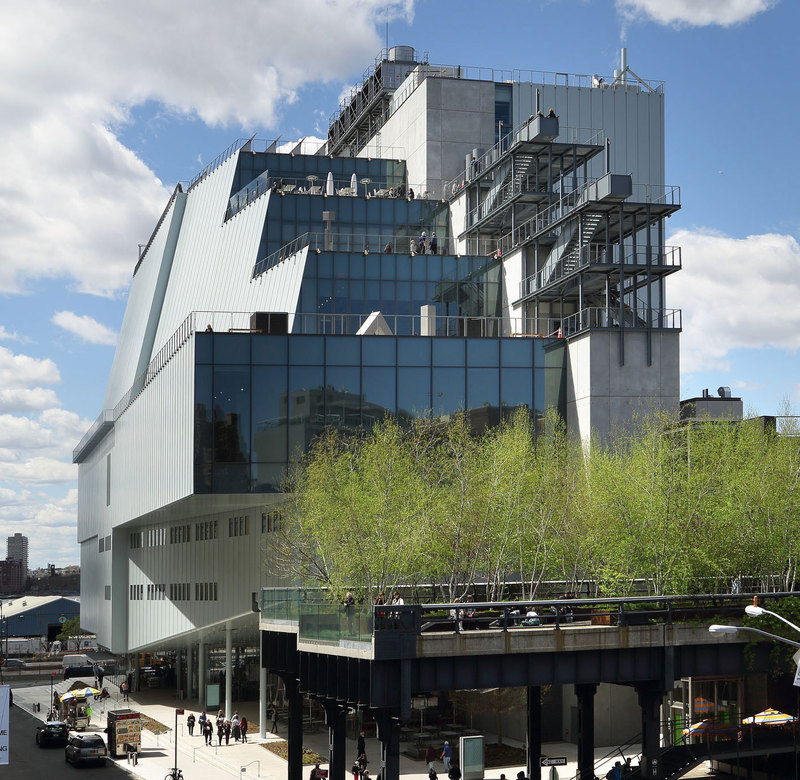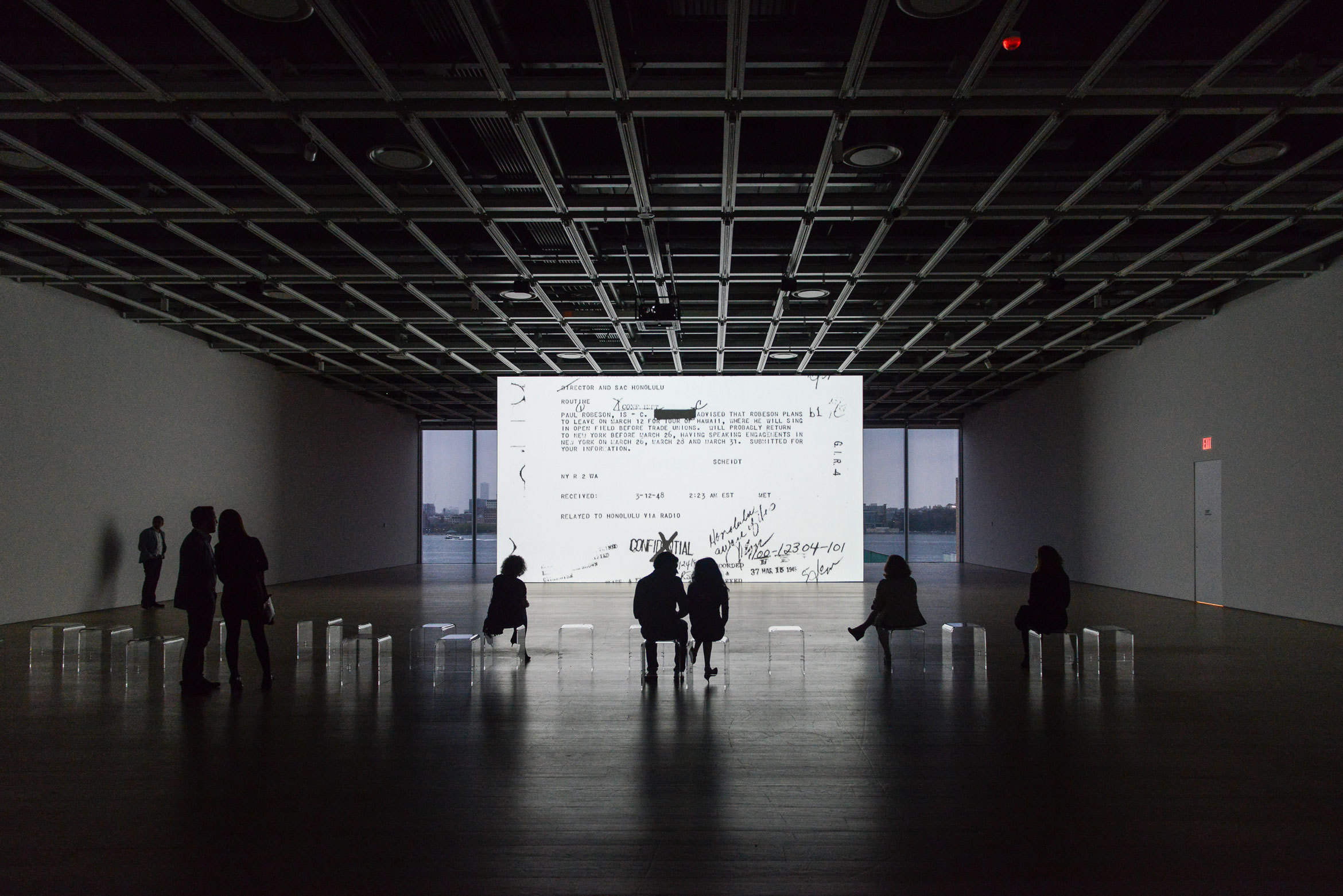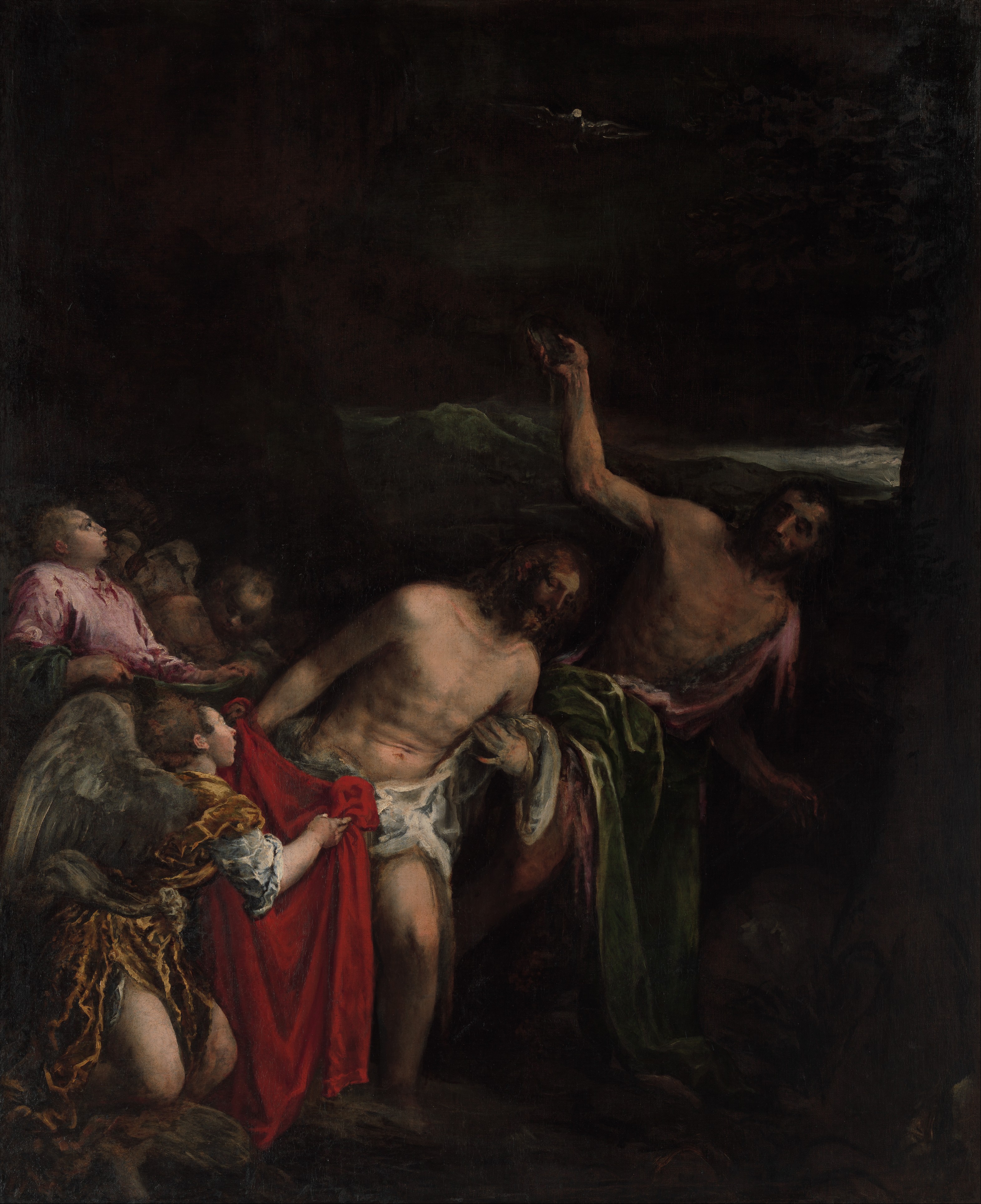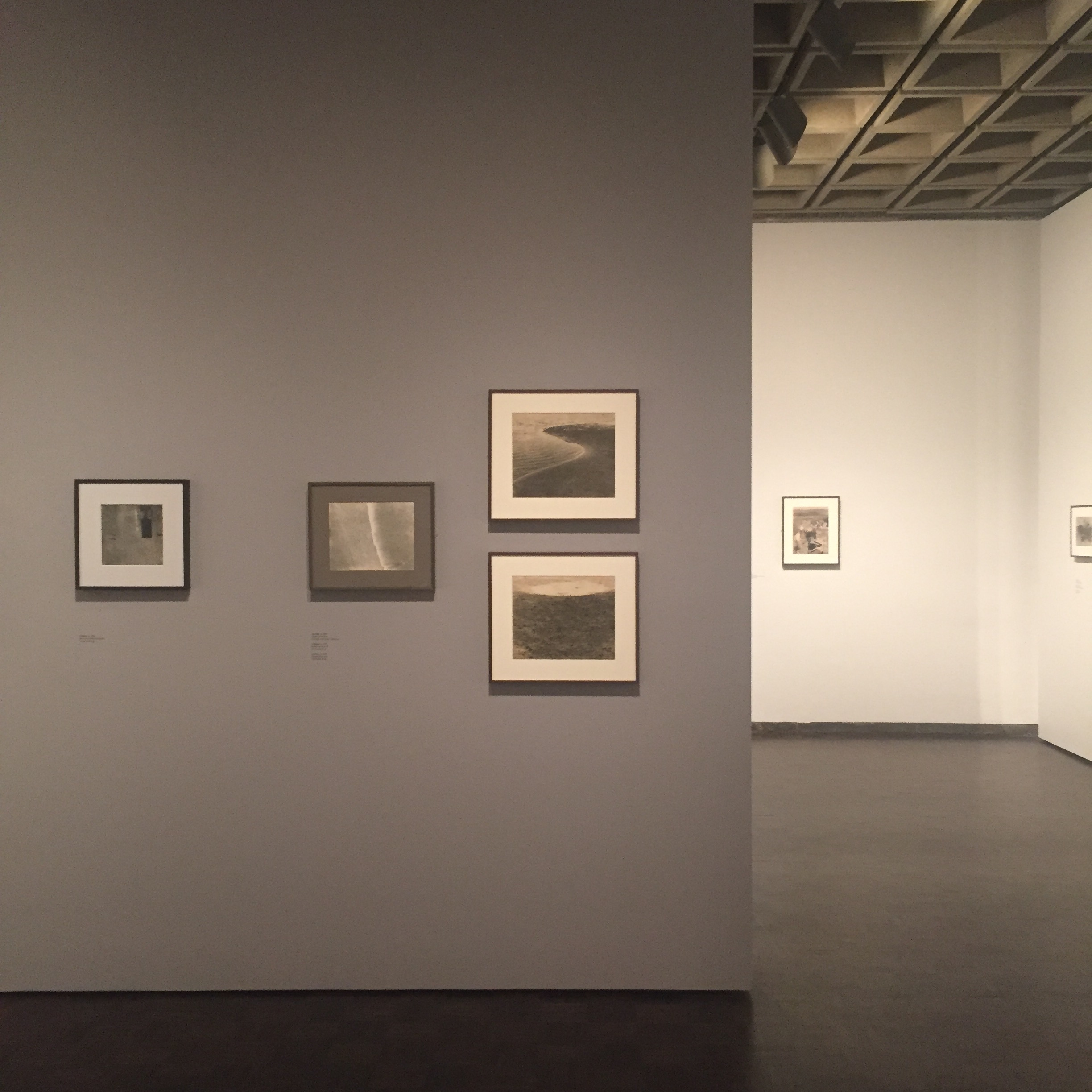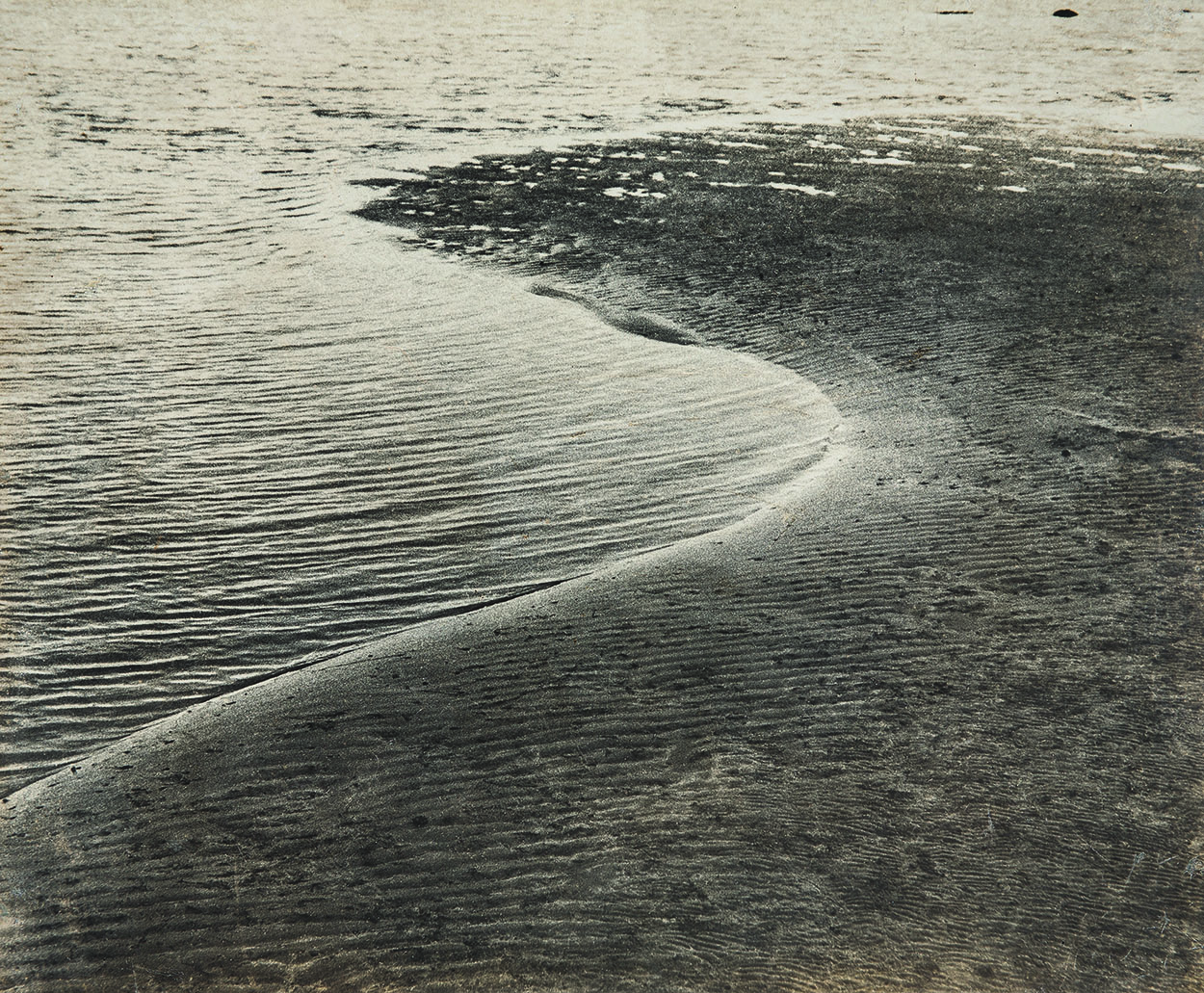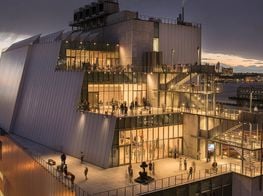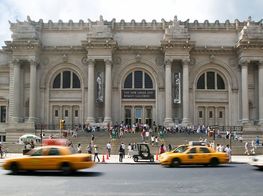Transparent Fortresses: The Met Breuer and the Whitney
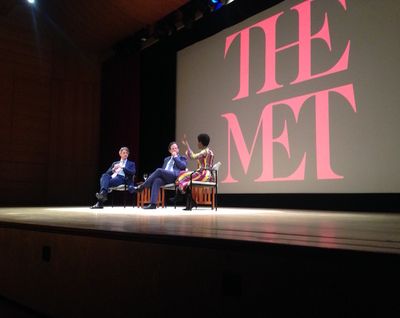
Tom Campbell, Adam Weinberg and Thelma Golden. Photo: Sophia McKinnon.
Thomas Campbell and Adam Weinberg sat down with Thelma Golden to discuss the growing and shrinking effect on audiences, sharing terrain, and embracing technology.
On 1 May 2015, the Whitney Museum of American Art's new home in New York's Meatpacking district was officially opened to the public, 70 blocks from where it had resided for nearly 50 years. Its former home, a gleaming 1966 Bauhaus fortress, designed for the Whitney by Marcel Breuer, faced an uncertain future, but Leonard Lauder, long-time benefactor of both The Met and the Whitney campaigned to 'keep the light on'.
As a result on 18 March 2016, The Met Breuer welcomed visitors into the space of the old Whitney, now transformed into a contemporary platform for The Met's exhibition programme. The imposing bones of the Breuer structure itself, often described as an inverted ziggurat, undergirded the two iterations.
Downtown, the Whitney is settling into its Renzo Piano-designed riverside site, and its #newwhitney hashtag. Both entities, somewhat controversially, also revealed new visual identities via their new logos. The Whitney's 'responsive W' twists and turns with a kind of graphic restraint, while 'The Met' stacked the words of its abbreviated moniker neatly atop each other. Geographic shifts and metamorphoses are afforded to few institutions—especially those so defined by a particular location—yet the Whitney and The Met have done so in under 12 months, in the same city.
One year later, Thomas Campbell (The Met's Director and CEO) and Adam Weinberg (the Alice Pratt Brown Director of the Whitney), sat down with Thelma Golden (Director and Chief Curator, The Studio Museum, Harlem) at The Met's Fifth Avenue for Directors in Dialogue, to discuss the growing and shrinking effect on audiences, sharing terrain, and embracing technology.
Below is an edited transcript of their conversation, as recorded and edited by Ocula contributor Sophia McKinnon, a member of the audience.
Thelma: One month past the opening of The Met Breuer, which is a place that we can begin to talk about [in relation to] a shared history. Tom, tell us what you are thinking now, a month into being in this new home, before we turn to Adam, a year into the Whitney's new home.
Tom: It's a very exciting moment. There's been a growing awareness at The Met that our audience wants to see more modern and contemporary programming ... We didn't set out to duplicate the Whitney or MoMA, but we are charting a distinct programme. Thinking about the pre-Met Breuer and asking ourselves, how might we use this space?
Adam: One of the great things about our building downtown is that Renzo Piano is a secure star-architect and he picked up on queues in the Breuer building. One of the first things you see when you come into the building are the Richard Artschwager elevators, and you have the same thing with the Breuer elevators, they open straight into the exhibitions. In both places, when the doors open, you're not on your way to the exhibitions you're already in them.
Tom: There's an immediacy.
Adam: A presence—the curtain is drawn instantly. You never know what it's going to look like when the doors open. There's always that moment of surprise, sometimes of shock. But also, you can get your arms around the building; The Met is a great building but you can't get your arms around it. You can get your arms around the Breuer and you can do it at the new Whitney.
Tom: There's a grandeur and scale to this building but it can be overpowering. The Breuer and the new Whitney—they are both more intimate, immediate spaces.
Adam: And a laboratory too, all of a sudden The Met could have an off-site space that was close and in which you could do things that you might not do otherwise.
Thelma: That idea of intimacy: when I think of that building [the Breuer], I think of that. How do we create that sense? When I go to the Breuer now it's like returning to a childhood home. Let's talk about the idea of space and how to serve audiences. This requires space. Both of you have thought about that in interesting ways.
Adam: Gertrude Vanderbilt Whitney used to hold gatherings in her studio in 1907 in Greenwich Village; it was always about the intimacy of experience. It was about the connection of the artist as a maker, and the process of that. It may be the only museum in New York founded by an artist. My predecessors always said wherever the artist leads, the Whitney must follow.
That was what Mrs. Whitney felt, that she was making a place for artists. One of the great ironies, originally, was that the Whitney was the accidental museum. Mrs. Whitney wanted to give her collection to The Met, The Met was not interested, and that's how the Whitney was formed.
Thelma: Ok. I didn't think we were going to get there so soon, but we're here!
Adam: But to go the next step, the New Museum was begotten because of certain perceived limitations of the Whitney. Marcia Tucker who was a curator at the Whitney, went and established the New Museum.
Thelma: And the Studio Museum was conceived because of a perceived lack everywhere.
Adam: Exactly. It's not a negative. It's a positive.
Tom: When Leonard [Lauder] said to us that 'he wanted to keep the lights on in the Breuer', it was a very exciting opportunity. A very divergent, different character of space that was exciting to us. In The Met Breuer, one of our trustees said to us 'my goodness, where did this el Greco come from?'. The difference in encountering it at face level, rather than looking up at it two feet below the ceiling.
Adam: That contrast in experience of the work.
Tom: We need to make people excited about our collections and there's such a tendency to label and shelve and archive. If you can get people to see the old masters with fresh eyes, you realise how immediate and relevant the subject matter and that creative experience can be.
Adam: I mean all art was contemporary in its time, that's what people forget. That's what we all do in museums, clear away the complexities.
Thelma: Adam, can you talk a bit about Open Plan, the current exhibition [at the Whitney] and how it's seemingly responsive and reactive to the space?
Adam: We have this 18,000 square-foot column free gallery and when we were building we realised that we might never see it that way. Our curators Donna de Salvo and Scott Rothkopf said 'wouldn't it be great if people had to take the whole space', so we invited five artists from different generations.
Andrea Fraser did absolutely nothing in the space, it was empty, and created a sound installation which reflected on the notion of institutional spaces. It was very powerful and very disturbing. Lucy Dodd did freestanding paintings that were up for only four days. Michael Heizer did this huge projection piece that actually we have owned for 25 years but it never fit in the Breuer.
There is the idea of getting people attuned to the timing of things and the sense of urgency. But also, the space between the outside and the inside has disappeared. Art feels connected to the world, not pulled out of it. The great thing about the Whitney is that people go on good weather days as well as bad weather days.
Frank Stella had installed this great piece called Raft of the Medusa which was basically junk metal and he installed it against this window that looked onto a sanitation plant on the Hudson and he said 'It looks like the junk from that place has popped up into the gallery here'. It's not been shut away; it's been opened up. Each artwork of its time is connected to the world; we forget that.
Thelma: Tom, can you talk about the premise to Unfinished: Thoughts Left Visible [at the Met Breuer] and how you thought about showing contemporary art in the Breuer building?
Tom: About six years ago we were given a [Jacopo] Bassano from about 1590 (of the Baptism of Christ) that incited a debate about whether it was finished. It's a very raw painting; through its rawness there was a phenomenal impact. That was the germ of this exhibition. It's such a familiar trope, the tension between the raw material and the finished work of art. What we've done is to turn back to the 16th century and look at the play and intentionally 'non-finito' or unfinished.
Also literally unfinished work can become as iconic as unfinished work. Broad ranging, experimental; it absolutely embodies what we can do. My peers show modernism in terms of modernism but we can show it in context of history which is different to what our peers are doing but also complementary.
Thelma: In many ways so much of what we all do is a deep and respected relationship with artists. Can you talk about that role now?
Adam: The Whitney Biennial in many ways was curated by the artists. The Whitney has always included artists in every exhibition. Marcia Tucker in the early 70s was severely criticised for allowing the catalogue to come out after the show. That was considered really radical. Giving the artists the agency to actually do the work and not have intermediaries. Good curators are really good editors. We had a really good philosophical conversation with Frank [Stella], he asked us 'Do I not have a right?' It's at the heart of curatorial practice.
Tom: With The Met's new activity there has been quite a lot of surprise. It always surprises me the level of surprise because we have always had a longer relationship with artists, but the first period of our existence was actively engaged with artists. When we were set up we had artists on our board.
Our engagement with modern and contemporary was reignited after the Second World War. Throughout the museum history artists have come here for inspiration. We've commissioned a number of artists to respond to our collection through The Artist's Project. Kara Walker and Kehinde Wiley are two that we feature among many others. It's a sort of web-isode. There are some really unexpected conjunctions; we've got another 20 to come.
Thelma: All of us leading institutions have to dig into that founding mission.
Adam: It's a living mission. Something I've always said is to paraphrase Bill Clinton 'It's the programme stupid'. The building is great and it's a vehicle but it can't be the purpose. It's what you do. We've all seen great buildings do nothing and minuscule places do great things.
Tom: When The Met was founded in 1870, New York was in tumult. The founders were inspired by European models and wanted to create an educational institution. It had a civilising mission, but it was educational at its heart. Since then every leader has gone back to that original mission to redefine. We're at an interesting time.
Art history in the 60s, 70s and 80s was characterised by specialisation. We are abiding connectivity. You have to prove relevance. You have to engage. Technology is changing audience behavior. We were passive recipients of programming. Now we are all much more actively engaged in creating our own programme. The nature of education and engagement is shifting and we are shifting with it.
Thelma: I am happy to be a poster child for Education and Access. I began here [at The Met] as an intern in high school programs and that meant a lot to me. I want to ask you both, how do you see the future?
Adam: I don't think you can predict the future.
Thelma: How about next week?
Adam: When artists challenge an institution they always do it in ways you don't expect. I've always seen the Whitney as being the material as well as the site for artists. I guess I'm a romantic and I still believe it, that artists are seers. I think they often say things that other people wouldn't. Our job is to create that space for them to do that. Museums in New York: while we share a lot we are all distinct. It's better that way. There are more voices in the conversation.
Tom: We are able now to deliver different kinds of content in a very discreet way. Five to six years ago the idea of delivering through mobile was elitist. Now, 93% of our audience are carrying mobile devices. It's ultimately about bringing people face to face with works of art and then stepping back so that there's nothing between them and the artwork.
We are aware of what's going on globally in a way that's much more immediate than in the past. The emergence of the educated middle class in vast parts of the world, and the growth of many new cultural institutions: we are part of that network now. We have directors here this week as part of The Global Museum Colloquium.
Thelma: You both were curators. Can you talk a bit about your formative experiences?
Adam: In 1973 I was an intern at the Guggenheim. On the day of my interview I got there an hour early. I saw the guards were installing a Jean Dubuffet show. I realised I had no idea who made the decisions. Just in those 20 minutes I had this realisation that there was this way of making meaning. I didn't even know how you had to be educated to do it. Something clicked.
Tom: When I was young I saw a poster of lady and unicorn tapestry in Musée de Cluny in Paris. Later on I hitchhiked back to Paris to visit museums. Also the first time I saw [Monet's] Water Lilies, I knew it was meant to be meditative and transcendental place. I half got there. I was 16. When I did eventually get to Cluny it was magical and physical.
Adam: What about the Studio Museum?
Thelma: At the Studio Museum we are getting ready to celebrate our 50th anniversary (in 2018 or 2019 depending on how you do the math). Looking at our founders, they were speaking to the exclusion of black artists in the art world and working to correct that exclusion. If you fast-forward, we are doing that now in this amazing physical space—but as you say it's just a frame ...
Adam: People fantasise that we [museums] live in competition. We're in service! We are just here to protect and pass on. —[O]


